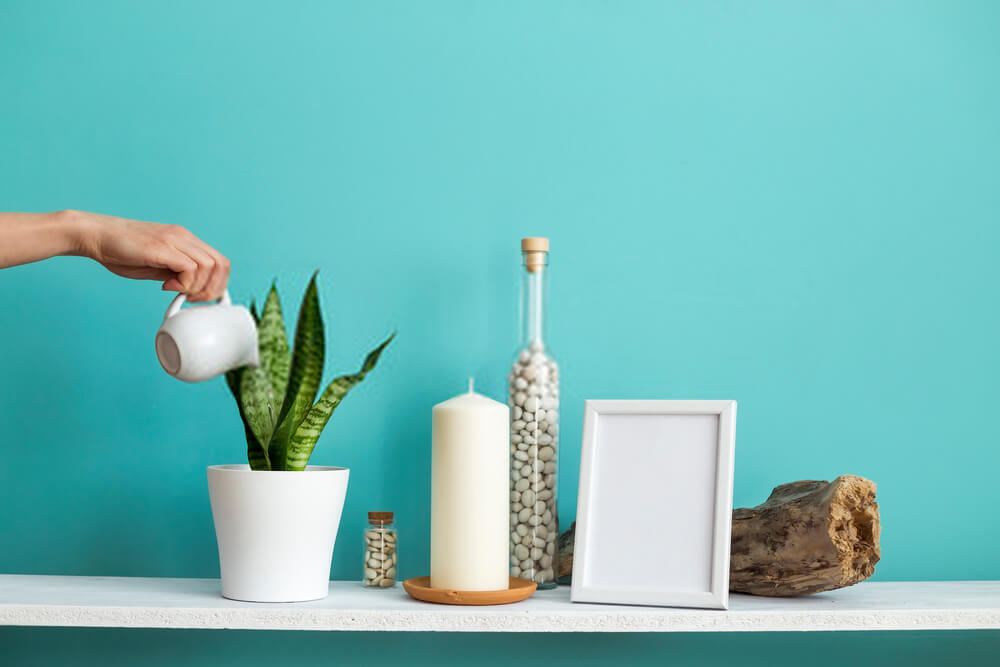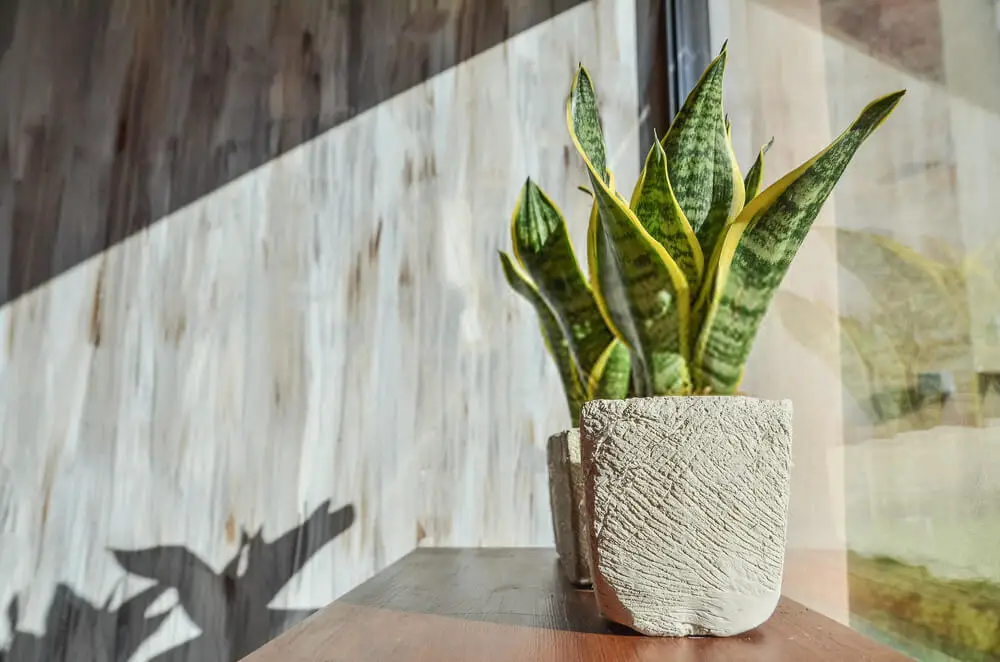Last Updated on June 12, 2022 by Gary Stephen
Have you ever wondered why your snake plant is drooping? Don’t worry, we’ve got your back. Here are 6 simple reasons your snake plant is not doing so well.
Dracaena trifasciata, sometimes called the snake plant or the mother-in-law’s-tongue for its sharp edges (make of that what you will) is an excellent addition to your home for its hardiness and ease of care.
They’re not finicky, they don’t demand so much attention and this species, in particular, is quite pretty to boot. But then you wake up one morning and your easy-to-care-for tough-as-nails darling is drooping, and you have no idea why.
What is a snake plant?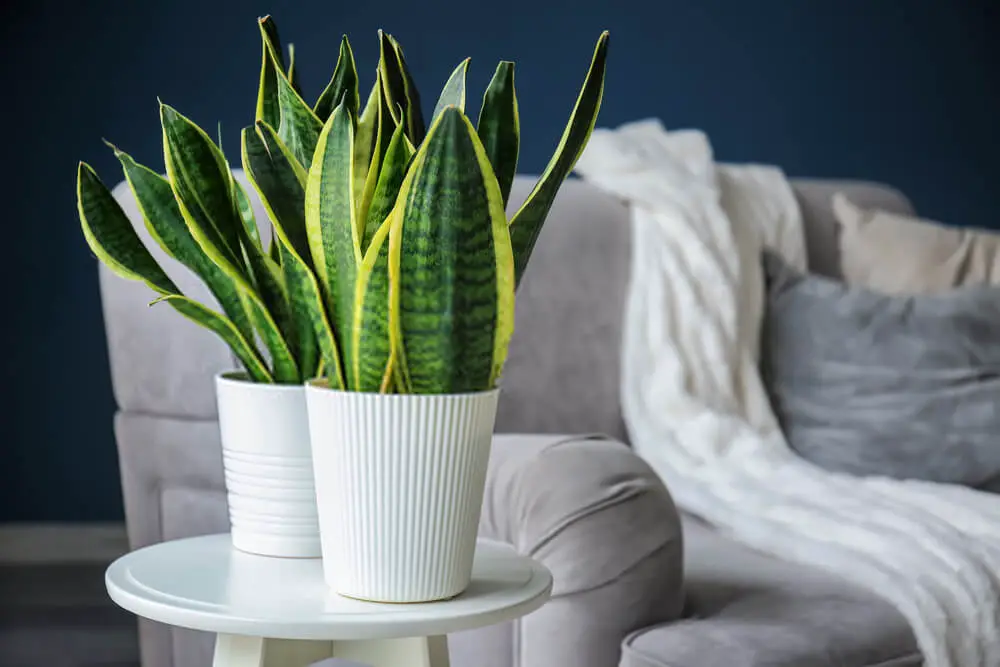
To start off, let’s first discuss what a snake plant is, and the different species you can get.
The snake plant is a tropical plant most often found in West-Africa and can also be found in the Congo. Although today, due to its hardiness, the plant is available to purchase all across the world, even in China. There are over 70 species of snake plant, but not all of them are well-suited for indoor living. The dracaena trifasciata or, as it was until recently called the Sansevieria trifasciata, is the most common variety. In China, they call it hǔwěilá which means “tiger’s tail orchid”.
It is an evergreen, always a bonus, and, if properly cared for, can reach heights of 6 feet in length! Although by then, you’re probably going to need a bigger pot.
The plant is quite popular for its toughness. There’s a popular saying that goes:
“You can keep a snake plant in a closet and it will be fine.”
But just because a plant is tough, doesn’t mean it doesn’t need very specific care to keep it happy and healthy.
Why is my snake plant drooping?
If your plant is ailing, there are six things to consider; the amount of water you’re giving it, the pot, lighting, pests, drainage and heat. All of these play an integral part in keeping your snake plant healthy. So, let’s take a look at why your plant might not be doing as well as it should.
1) Too much water makes snake plant drooping
The snake plant is accustomed to the high-humid deserts of West-Africa. As such it requires very little in the way of water to survive. Its leaves in particular are designed to hold water for exceedingly long periods. So, your normal watering routine that you uphold for other household plants could be overkill for your snake plant.
When giving water, first make sure that the plant actually needs any. To test this, simply push your finger into the soil of the pot and see how dry it is. If the first 2-3 inches are completely dry, you can give your snake plant some water. If not, leave it be and wait until it gets dry before giving anything else. Continue with this routine until your plant’s leaves begin to straighten again.
Don’t mist your snake plant! Despite coming from a high-humid environment the snake plant’s leaves will sag and eventually rot off if you begin to mist it. Keep your watering limited to the pot, and your plant should be fine.
2) Poor Lighting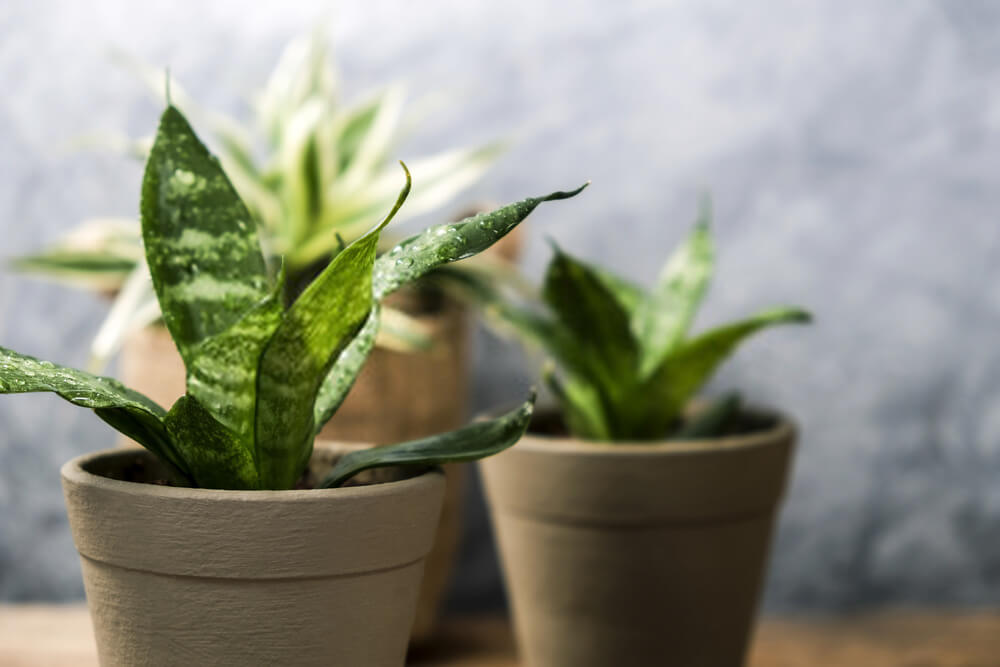
Because the plant grows close to the ground underneath dense forests in its natural environment, it tends to receive quite minimal sunlight. As such, it has grown (ha!) accustomed to surviving on scant bits of sunlight.
Putting your plant in a too bright area will essentially ‘overheat’ it and it will slowly begin to sag in on itself. Likewise, if you drop the poor thing in a closet (to possibly test that old saying) or place it in a very dark room, it will also sag for lack of any sunlight.
You’ll need to find a sweet spot. Around 10 feet away from a south-facing window should do fine. You can do the same if you have a west-facing window. For north and east, you should be okay to put the plant on the sill. You can also just close the curtain in the room, and leave a sliver of sunlight, but keep a lookout. They don’t need more than 8 hours of sun a day – usually even less, especially if the sun is quite intense, like in summer.
Sunlight also has a wonderful effect of brightening up the plant and allowing that beautiful pattern to stand out more against the green.
3) No heat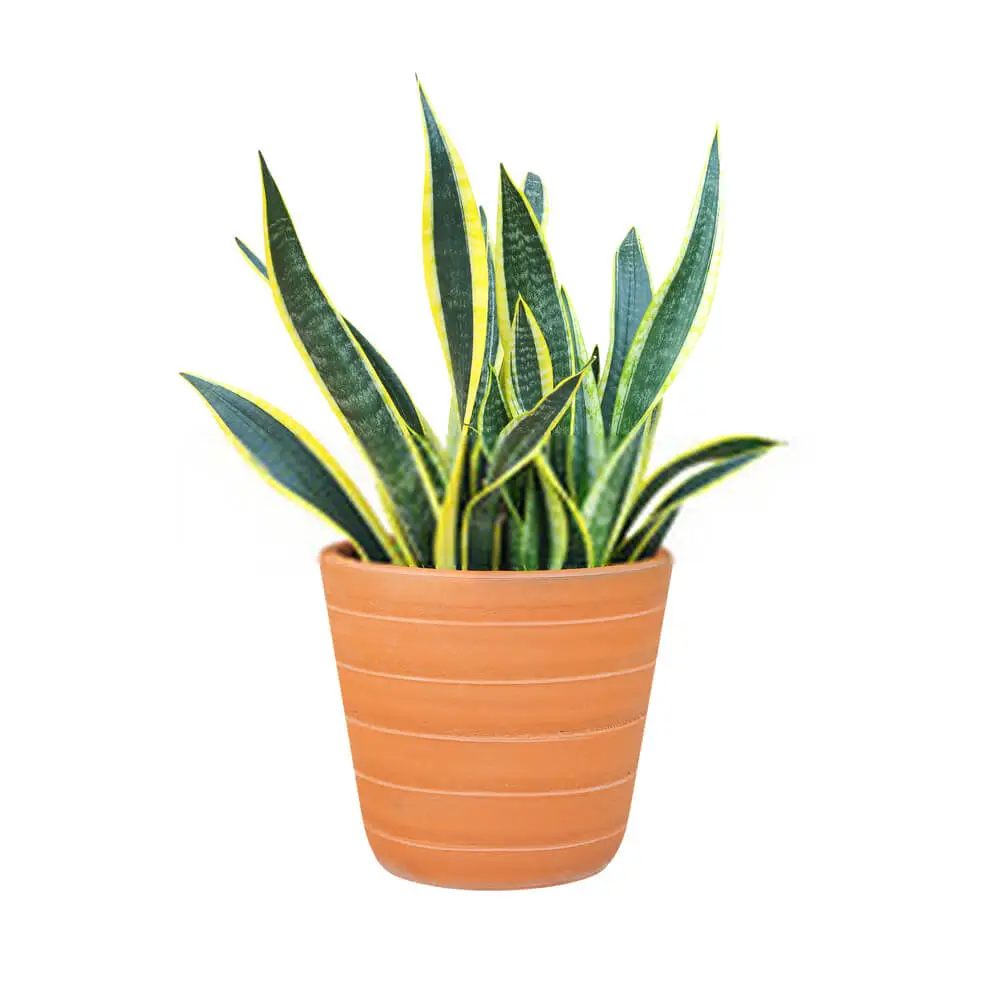
You might notice when winter comes along your snake plant will instantly begin to sag. Apart from the extra moisture in the air, this is also due to a lack of heat.
As stated above, the plant grows in a tropical area, so it’s used to a bit of boiling humidity. If your plant is sagging in winter, try moving it to a warmer room and see if that spruces it up. Keep in mind that putting it close to a window might actually be detrimental as in winter it will be much colder by the window. Rather try a south-facing window, and put it around 10 feet away with the curtains wide open for part of the day to ensure it receives a lot of sunlight with an extra snuggle of warmth to boot.
At the same time, be careful not to overheat the plant, as this, in turn, can cause damage to the leaves as will intense cold. Just keep it at a good room temperature, around 60-80°F and your snake plant should thrive.
4) Pot is too small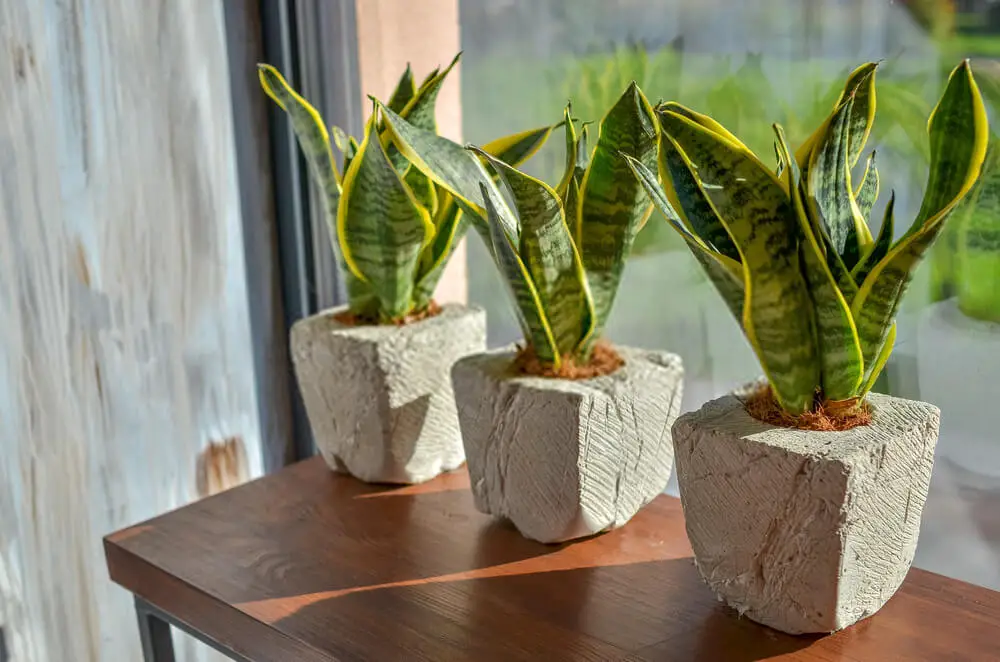
When a pot is too small, our plant’s roots have nowhere to go, and they start to wrap around each other. It’s not a pretty sight.
Also called ‘rootbound’ this problem can occur with any plant in your house. We often misjudge the size of a pot plant and end up shoving the hapless thing into a pot that’s simply not going to give it enough space for its roots. Obvious signs of a rootbound plant are sagging leaves, discolouration of the leaves, or even the pot cracking from the pressure of roots trying to grow out of their container.
Simply repot the plant into a new pot, and you should see a major change in a week or so.
5) Bad drainage ensures snake plant drooping
If the pot is big enough, you’re giving water correctly and your sunlight is spot on, but your plant is still looking like a dying octopus, your next possible cause could be the drainage.
Sometimes the soil simply holds too much water, and it’s not being drained fast enough. As a result, your plant is absorbing this water and so it begins its inevitable sag due to ‘drowning’. To fix this you will need to repot the plant into soil that is specifically made for cacti or succulents. You could also add perlite to your potting soil with some compost if you don’t have the other specialised soil handy.
To check if your soil is the problem, simply pour in a cup of water and see if the soil is absorbing the water or if it’s being drained. If the former is the case, repot the plant, maybe shifting it to a bigger pot while you’re at it and your plant should be right as rain soon.
6) Pests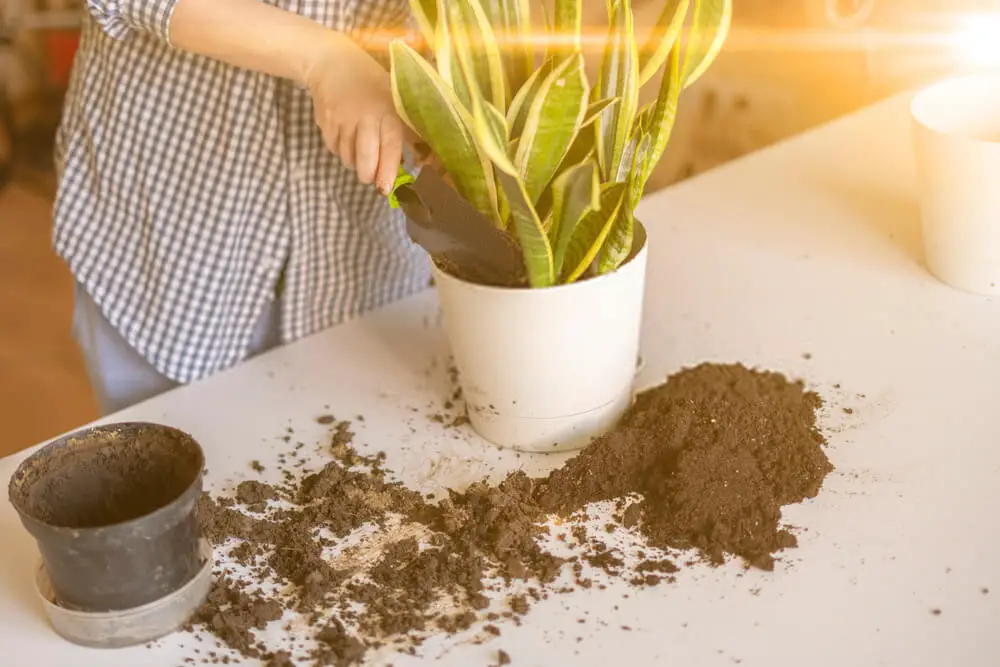
Finally, after you’ve fixed the pot, checked the heat, watered correctly and checked the soil and your snake plant is still drooping, it could be pests.
While a plant is sick and suffering, it will be more susceptible to pests. Keep in mind that when a plant picks up any sort of pest, the possibility of it spreading to your other plants is very high. Rather remove the plant from the others and keep it isolated while you are treating it. In certain circumstances discarding the plant is better for both your plants and the frustration, you will have in trying to save a lost cause.
To save yourself the headache of pests on your plants, keep them sterilized, watered and healthy, and always use potting soil not gardening soil, as the soil in your garden can already be infected. A healthy plant is resistant to disease, and keeping the environment a little sterilized is always a good practice when it comes to plants. Especially if you have pets.
Other infections make Snake Plant Drooping
But if all your preventions were for nought, and your plant became infected in any case, here are a few possible infections your snake plant, in particular, can pick up, and how you can treat them.
-
Fungus gnats
Signs: Rotten roots, sagging leaves.
Treatment: Fungicides, peroxide, repotting of the plant.
When your plant is overwatered or has poor drainage, these fruit fly-like insects will crawl out of the soil and attack your plant. You will have to repot the plant, cut off the rotten roots and make sure that your plant’s drainage and watering is being done correctly. If the problem persists it might be best to discard the plant.
-
Spider mites/mealybugs
Signs: Brown spots on leaves, drooping leaves, shedding leaves.
Treatment: Spray insecticide, remove infected leaves, if the infestation is high, would be better to discard.
These little critters will suck the sap out of your plant and slowly kill it. They come from outside, often via your cat or dog, and can easily infect your plant. If you catch it early you can quickly remove the infected leaves, spray insecticide and treat as needed. To prevent spider mites, you’ll have to keep the plants sterilized.
-
Southern blight
Signs: Wilting, white thread-like growths.
Treatment: Fungicides.
Southern blight is a fungal infection that infects the stem of your plant and most often occurs during high summer months. The infection will first be white, almost thread-like growths that will cover the leaves and stems, and then will slowly turn darker in color, oftentimes brown. If you have more than one plant infected, it is best to discard the batch, as it is difficult to get it under control. Keeping your plants sanitized will help prevent this from appearing and spreading.
-
Thrips
Signs: Wilting, twisting leaves.
Treatment: Remove infected leaves, insecticide soap, wipe leaves down with water.
Thrips are small insects that feast on your plant. Although you can’t spot them with the naked eye, you can see where they are or have been, by the roughness of the leaves. Thrips, although easy to treat, can infect your plant with deadlier diseases like late blight, which can kill your plant within two weeks. It is best to treat it as soon as possible. If your plant is heavily infested, rather discard the plant as it can spread quite easily.
Insecticide soap is quite handy to control Thrips. Simply whip up a batch and use it to wipe your plant clean. Thrips spread easily, as they can fly, so if you spot them on a plant, isolate it immediately and keep your other plants sterile.
Although often touted as the ‘easiest plant to keep’ the snake plant is still a plant and needs proper care to thrive. Make sure to take the time to understand all the needs of any plants you bring into your home. Much like animals, they can be quite unique in their individual care, and if we neglect to learn, we will often find ourselves discarding beautiful specimens due to our own negligence.
Wrapping Up about Why Snake Plant is Drooping
Why struggle with a drooping snake plant if you can simply read and use this handy article filled with top tips to keep your snake plant in tip-top shape? Go through these six reasons why your snake plant might be drooping to find the best solution for your plant needs.


